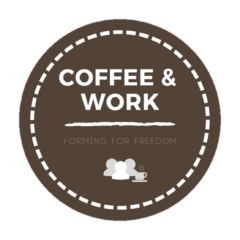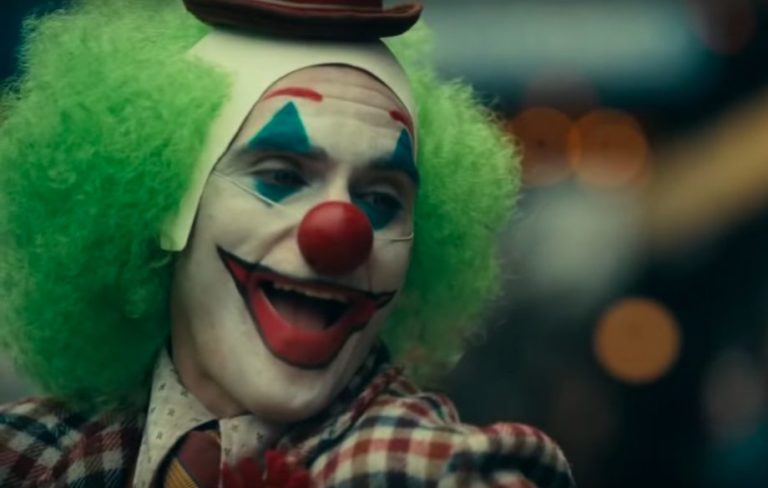
Joker was awarded at the Venice Film Festival even before being officially premiered on October 3. Surrounded by controversy, we all must agree: the film has a strong narrative. Like every single thing in this world, it is not unanimous. Some bashed Joaquin Phoenix’s performance, that’s impeccable, in my point of view. To others, the plot of the film is not so good. However, here, we will not go into these aspects. This text aims to put light on some ideas over the work situations based on scenes of Arthur Fleck’s life presented in the movie.
WARNING: We have to begin this text by warning the reader about some of its points. First of all, we have no interest, here, to reflect on the mental health of the character, in this case, Joker. To anyone who wants readings with this approach, I suggest taking a look at Google. Certainly, Arthur suffers from different symptoms that make his socialization difficult. Although to understand him, in his subjectivity, it seems evident that we should have two aspects in consideration: a formation in psychology/psychiatry, and a more specific description of the clinical picture of the character. Both are resources that are not available to us. Second of all, any political analysis is intended, even if it would match very well. Facing it, the main motivation of this text is to invite the reader to think about his/her postures at work. For example, in situations of inclusion or even considering the stereotypes that we have to handle in our daily life. In short, by watching Joker, we can get a very rich source to develop different perspectives of seeing and understanding the world that we’re building.
One of the main inspirations from Joker refers to the issue of inclusion. Rather, the way we treat those who are different from us, based on some physical, emotional, or other conditions. We have learned to label people as good or bad, forgetting that they have a history and limitations. Superhero movies have a lot of impact on that.
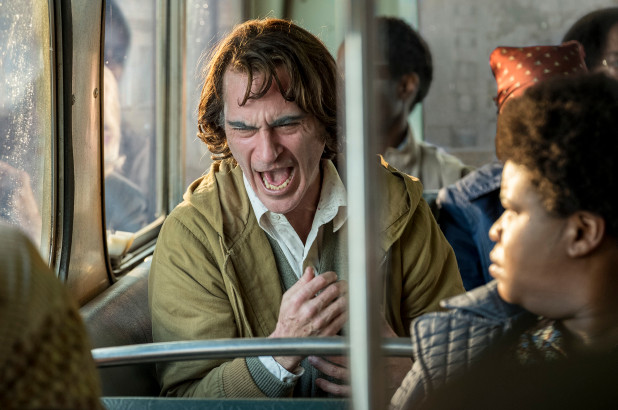
This is why thinking the villain from a different perspective is interesting, because we can try to understand which conflicts he has been living and some of the contextual factors that guided his narrative until the point we know. The most enigmatic scenes of the movie, in my point of view, are those that reproduce our daily life situations, as the relationship between Arthur and his co-workers or the bus ride. For example, even when the lady was aware about Arthur’s mental health condition, she scolded him for playing and making her child laugh. We can assume she was afraid of tranquilize him with a smile or looking to him empathically. In another situation, Arthur is working as a clown on the street, and the board he got in his hands got stolen by a group of young boys. Running after them, Arthur was caught and kicked, which shows us the inability to deal with the difference, with someone who’s working even though has some limitation.
The tough experience ends with a payroll discount, once Arthur couldn’t return the advertising board to the store he was working for. This is hard don’t, you think? You got stolen, physically assaulted, and, in the end, get a financial loss. Even if we have to put in the balance, we can say we all listened to different versions of stories like this, especially at the work. In short, about this topic, we ask the following questions: have you ever thought about your way of respecting the differences? How do you usually react when people with a distinct behavior are close to you? Perhaps, you’ve been already preparing yourself to deal critically with something natural just some days ago – like the mock. Maybe, you’re still trying and sometimes you do some misunderstandings. The point is: we’re inviting you to think about the answer we’re producing to the differences, recognizing those answers in ourselves. More than that: identifying and attacking addicted behaviors that preset job positions in business, govern, families, etc.
The second point is no less controversial: oh, this happiness that we need to express.
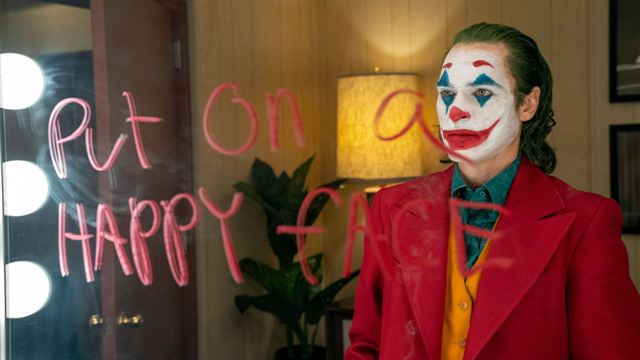
We don’t know exactly why, or if it’s real, Arthur’s mother’s encouragement to always put on a happy face. The question here is: when was the last time you felt pressured to show happiness? It was really there or did you pretend it? In the business world, satisfaction and happiness at work surveys are common. Behind its results is the organizational pressure for happiness, once it guarantees awards and a good reputation to a company. Implicit in these surveys we can find the social demand to feel happy. Beyond: to always be happy. The number of times, throughout the movie, that Arthur emphasizes the phrase: “put on a happy face”, leads us to think about this aspiration and how much it impacts every decision we have to take in daily life. How do I choose what to wear, to eat or to make in free time? A happy face is important for us to go on with our lives. But, it will be like this, only if that facial motivation is, at least a little, based on the facts of our lives. An optimistic look can guarantee us emotional stability, but recognizing it has been a complex activity because each day we create more unreachable standards of happiness. In the end, this may be the answer to increased depression and other mental illnesses, such as burnout, for example, all around the world. In this sense, Joker is a reminder of the consequences of seeking the eternal happy face.
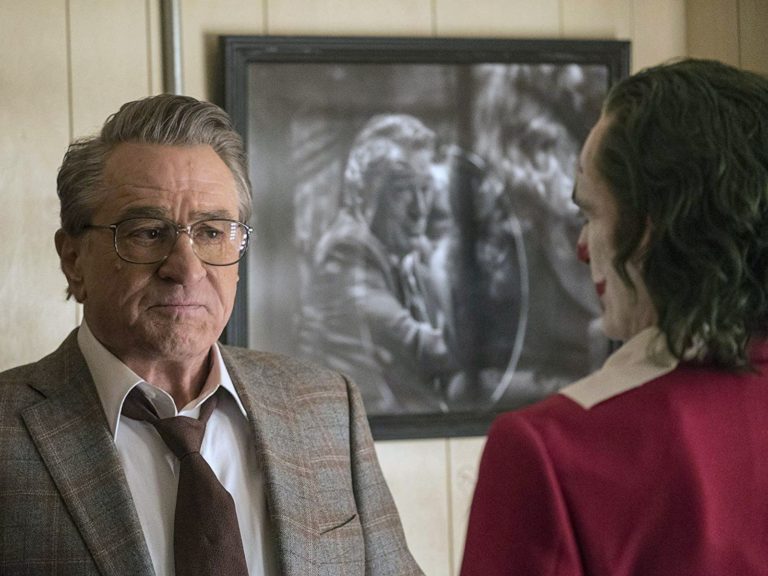
Perhaps therein lies the explanation of our choice for publicly evidencing what would be – by a socially constructed definition – a weakness of the other. When we highlight the other for what causes embarrassment, we hide our weaknesses and points for improvement from ourselves. This is why the work environment may be so toxic to our health, because we go there for many hours and learn that we can exceed any limit to meet company goals.
We hardly realize to understand the reasons that lead us to make certain decisions in the work. However, we should adopt this practice in the tiniest experiences, because of them are made the defining and definitive moments. When we choose how to establish our relationships with each other, what ethical criteria we will follow to determine our behavior, we are there defining our view of the world. More than that, we are ratifying or trying to transform these behaviors that are naturalized in society. For some time, it was natural to make fun of people because of their color, religion, sexuality, body. However, in contemporary times, these approaches, it is known, are not so natural. So, now society demands from us skills previously hitherto disregarded to perform the work effectively and efficiently.
Artificial intelligence is sophisticated, but it is far from emotional learning. Joker reminds us that we need to encourage the best from others through our work. This has little to do with the impossibility of criticism, but the opposite. We need to learn to deal with difference by being critical without focusing on offense, but on development. Work is a fertile ground for us to learn and nurture these inclusive, critical and transformative behaviors. But as Joker comes to remember, we have to use intelligence and sensitivity to get closer to each other. In our days, this is breaking with the status quo. This means make the revolution.
Additional Information:
By 10/15, the movie had already grossed $ 500 million at the box office, placing it among the top 10 produced by DC.
It’s screening at 24,555 movie theaters worldwide.

Gislene Feiten Haubrich is a PhD and MA in Cultural Processes and Manifestations. Her research is devoted to communication in organisational context, based on Ergology, Bakhtinian and French Discursive perspectives. Be in touch: gislene@coffeeandwork.net.
